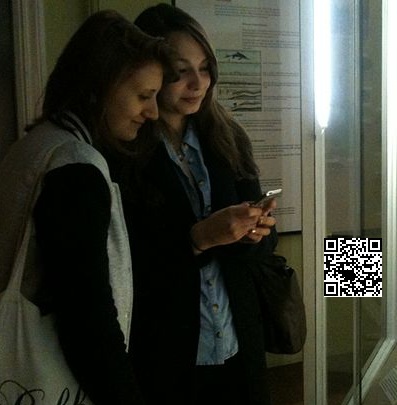 The store location in Ginza, Tokyo, is using quick response barcodes in a unique new way.
The store location in Ginza, Tokyo, is using quick response barcodes in a unique new way.
Ginza, Tokyo, is one of the most luxurious shopping districts around the globe, and its Barneys New York location is now using QR codes to appeal to a chic, tech savvy, and smartphone equipped consumer.
The barcode display has been designed to project it onto the storefront window every fifteen minutes.
The display was created by Simon Doonan, who has been creating window setups for the company for a quarter of a century. The QR codes in these displays are shown only once every quarter of an hour, and individuals who are patient and lucky enough to be able to scan them enter into the chance to win one of a number of different prizes.
The display with the QR codes is being called the “Treasure Hunt Window”.
The promotion ran throughout the entire length of the holiday season in order to give consumers the largest possible opportunity to spot the QR codes, scan them, and grab their chance to win a prize.
These window displays have been capturing a large amount of attention and have effectively brought traditional advertising and the mcommerce channel together. It has also provided the company with an added opportunity to sell more product throughout the holiday season – regardless of whether or not the store was actually open at the time – as users were also capable of heading to the store’s optimized website.
This means that the QR codes allowed consumers to try to win a prize, but they could also visit the mobile commerce website so that they could view some of the many products available at the store, and make a purchase as the site is equipped with a shopping cart and checkout option, as well.
This is not the first time that QR codes have been used by Barneys New York. They have also run a full magazine ad campaign that gave smartphone users the same opportunity to shop at the mobile optimized website of the store and to learn more about the products that they have seen in the ads that were printed in the magazines.
 GREE begins testing new application in small markets
GREE begins testing new application in small markets
GREE, a Japanese developer of mobile gaming applications, is setting up to launch its GREE Messenger in 2013, which will be available for the iOS and Android platforms. Though the developer has plans to launch the new application next year, the GREE Messenger is actually already available in some markets. This is because GREE has decided to push a test launch to determine the impact the application may have in the already crowded Asian market.
India, New Zealand, and Australia get GREE Messenger
The Asian market is filled with messenger applications that are designed to connect consumers to one another. These applications are typically very simple, allowing consumers to chat with their friends and make use of animated graphics to spice up their messages. GREE is keen to enter into this sector and has decided to test its messenger application in three markets: India, Australia, and New Zealand. The test version of the application has limited features and has seen relatively little coverage due to the fact that GREE has not actually announced that it is available in these markets.
Application may feature gaming aspects in the future
Mobile gaming has become much more than a craze among consumers; it has become a very important and accepted part of the mobile technology space. Though the GREE Messenger is not a mobile gaming application, GREE does have tentative plans to introduce some gaming elements into future versions of the app. For now, users will be able to text chat with their friends, invite their friends to group chats, share photos and videos, and check into locations they visit.
Foreign markets may be good testing grounds
Introducing the GREE Messenger to smaller markets in Australia and New Zealand where messaging applications are not as popular as they are in Asia may be a good move. Asia’s most popular messaging application, WeChat, boasts of more than 200 million users, with others also taking up a similar portion of the consumer base. This makes its difficult for similar applications to find any headway in the market and GREE is primarily focused on exposure and ensuring that its application can actually live up to consumer expectations.
 The store location in Ginza, Tokyo, is using quick response barcodes in a unique new way.
The store location in Ginza, Tokyo, is using quick response barcodes in a unique new way.
 GREE begins testing new application in small markets
GREE begins testing new application in small markets